Sit at a computer all day at work? Spend hours sitting through traffic? Here are nine easy stretches to soothe and strengthen muscles to prevent lower back pain, maintain flexibility and improve mobility.
Many of us spend the majority of our day sitting. We sit in our car, or on a bus or train, while on our way to work, then we sit once we get to work, come back home, and usually sit some more. Unfortunately for most of us, some of the only time we don’t sit is during our workout, which accounts for only about an hour or so of our day.
We all know sitting too much is bad for our health. But do you really know why it’s so bad for your body and muscles? Sitting extensively not only leads to tight muscles, but can also lead to weak and overstretched muscles.
Suffering from a sore neck, back and shoulders? Get our mobility guide to ease pain and soreness.
Get The FREE Mobility Guide To Fix Your Pain Today!
Today we are going to go over the muscles that you need to stretch, as well as the muscles you will want to focus on strengthening, if you work at a desk job. Performing these easy stretches and exercises will keep your body healthy and help to maintain and even improve flexibility and mobility, making your workouts (and even your everyday life) easier.
Muscles to Stretch
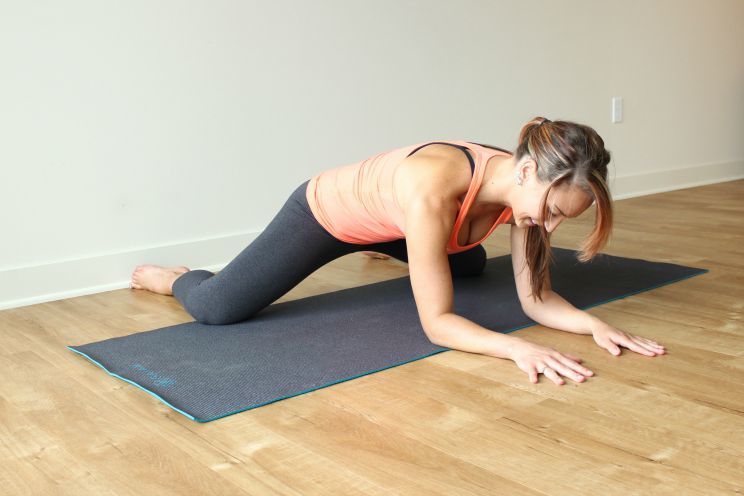
Hips/Hip Flexors
As you’re sitting in your chair, the angle between your torso and your thigh is shortened. This causes the muscles in the front of your hips to shorten. Over a long period of time sitting day after day, your hip flexors will begin to tighten in this position, which can cause numerous issues, including lower back pain. Stretching the hips and hip flexors can help prevent this. If you need some great easy stretches targeted for the hips, try these yoga poses.
Chest and Front Shoulders
Just as with the hips, most of us tend to lean slightly forward and allow our shoulders to round forward as we work at our desk. This leads to tightened chest muscles and front shoulders. Another great stretch that is not listed below to add in would be a door or wall stretch for the chest, if you know this is an area you need to focus on.
Low Back
Unfortunately, many of us are losing good posture, and this does no good for our lower backs. With the “slouching” that most of us do, tons of excess stress is put on the lower back and the vertebrae. As you sit throughout the day, focus on sitting up tall, with a straight spine, and keeping your shoulders drawn back.
Muscles to Strengthen
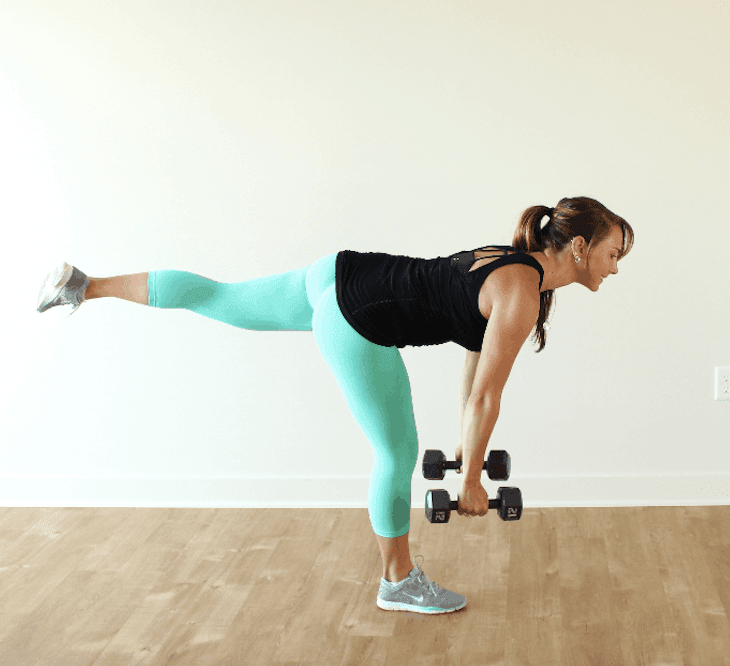
Glutes & Hip Extensors
Because you are sitting on your keister all day, it only makes sense that those muscles will be stretched out. Particularly the hip extensors, which meet at the base of the glutes and the top of the hamstrings. Hip extensors are just opposite of the hip flexors, so strengthening them will help to improve the muscle imbalances developed with prolonged sitting. Some great exercises and workouts to start with are these no-squat glute exercises. Also, be sure to check out these tips for building a better butt and how to do the perfect squat.
Upper Back Muscles
Just as with the hip flexors and glutes, the upper back muscles are just opposite of the chest muscles that are tightening in the front. The upper back muscles such as the rhomboids and lats will be overstretched and will need to be strengthened to correct posture and muscular imbalances. These posture-improving exercises can help build strength in those upper back muscles.
Abdominals
To help prevent stress on the lower back, it’s important to strengthen the abdominals to help you maintain good posture throughout the day and prevent “slouching.” These plank variations will help improve core strength, and adding in these stability ball exercises will really target those abdominals.
9 Easy Stretches to Do If You Sit at a Desk All Day
Add these easy stretches in throughout your day, or even a few times per day, to help keep muscles relaxed and to maintain flexibility and prevent muscle tightness.
Seated Figure 4 Stretch
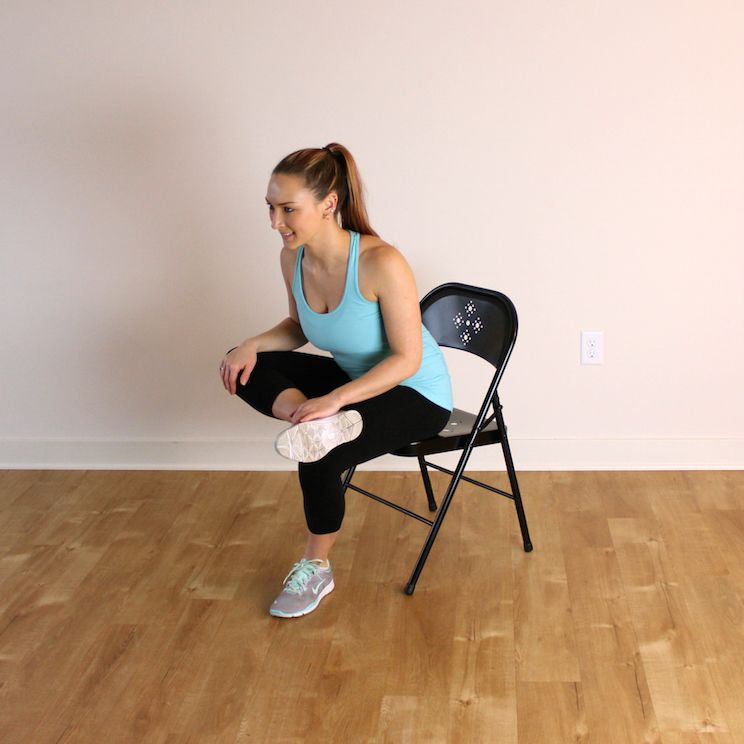
White sitting in your chair, cross your RIGHT ankle over your left knee, as if making a figure “4.” Keep your back as straight as possible as you hinge at your hips to increase the stretch. You can even apply a little extra pressure on the right thigh to deepen the stretch, as well. Hold the stretch for about 60 seconds, and then switch sides.
Spinal Twist
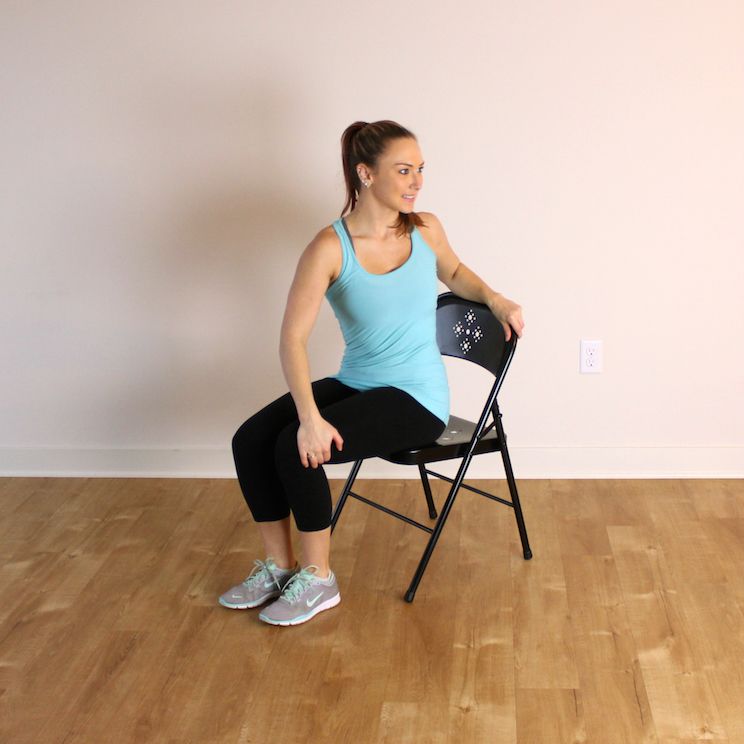
Sitting in your chair with a tall spine, keep your hips square and parallel to the wall in front of you, as you rotate your torso to the RIGHT. Place your LEFT hand on the outside of your RIGHT thigh to help you rotate. Always think of lengthening your spine and getting taller as you twist. Hold for 30 seconds, and then rotate to the other side.
Neck Stretch
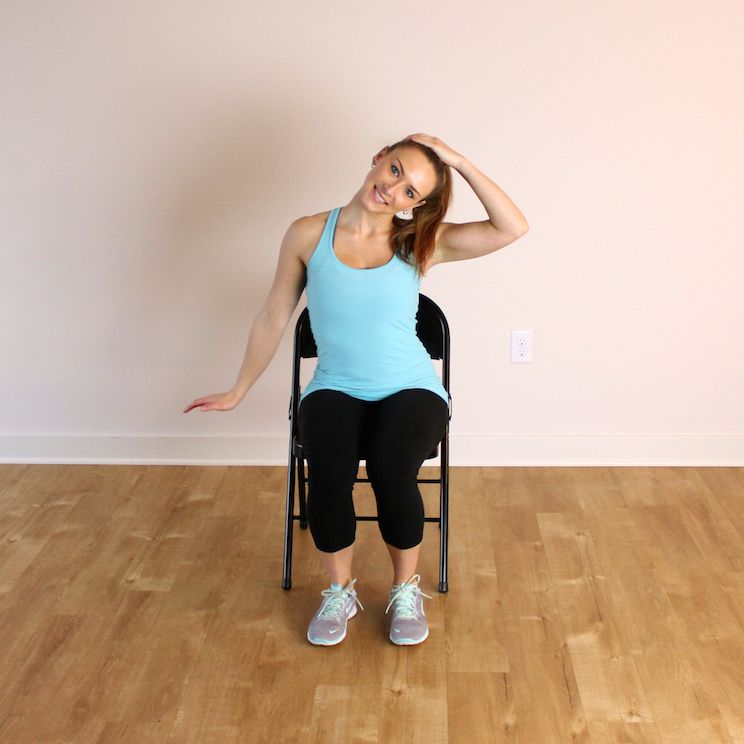
Spinal Reach with Clasped Palms
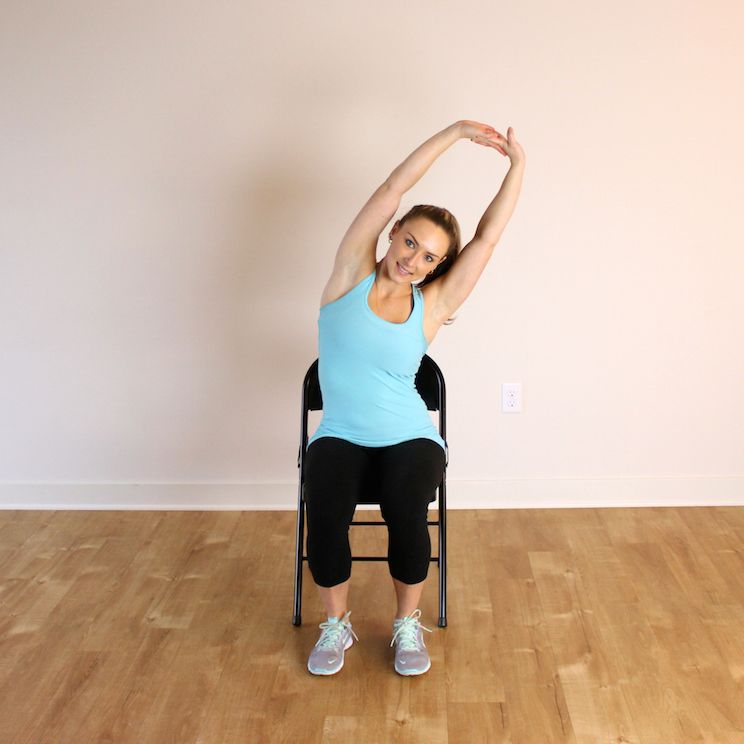
Sitting tall, clasp your hands in front of you and rotate your palms away from you (this will give you an added wrist stretch!), and bring the arms overhead, reaching your spine tall. Keeping the weight even in both hips, reach the arms up and over to the RIGHT. You should feel a stretch in the LEFT side of the body. Try to relax the shoulders away from the ears as much as possible, and not rotate the spine at all. Hold for 30 seconds and then switch sides.
Chest Opener
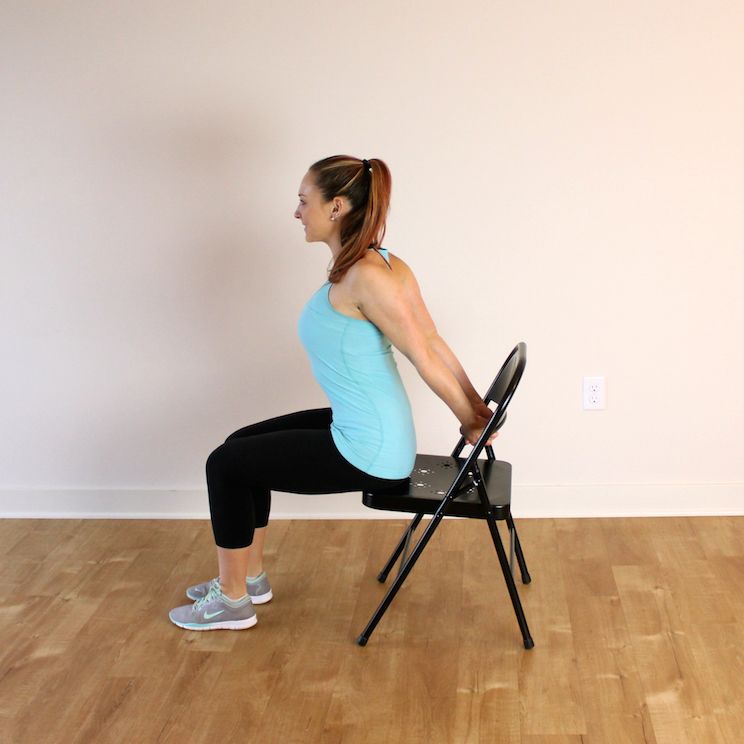
Sit on the edge of your chair, with your spine tall. Reach and clasp your hands behind your back, as you draw your shoulder blades down your back. If you can, slightly raise your arms up behind you to increase the stretch. Hold the stretch for 30 seconds and release.
Hip Flexor Low Lunge
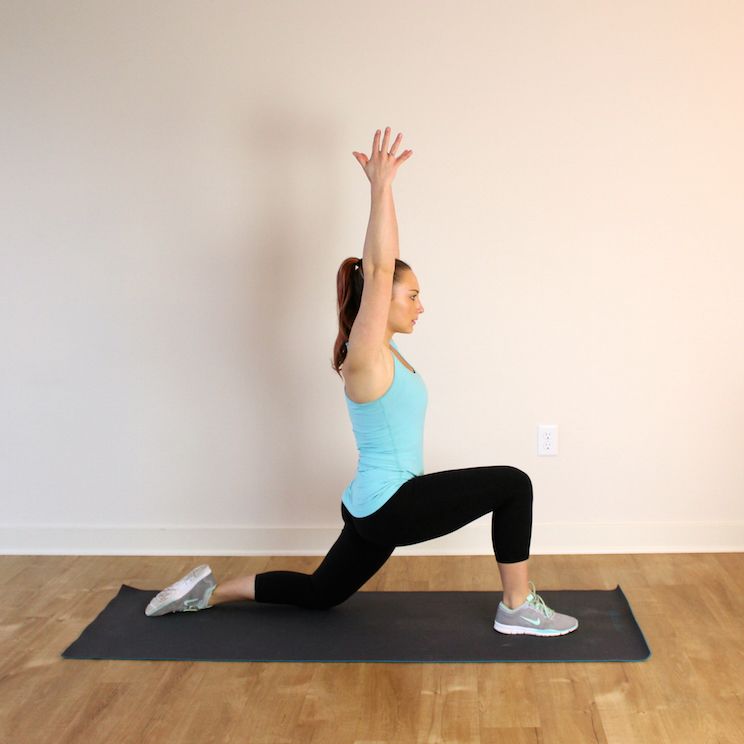
Hamstring Stretch
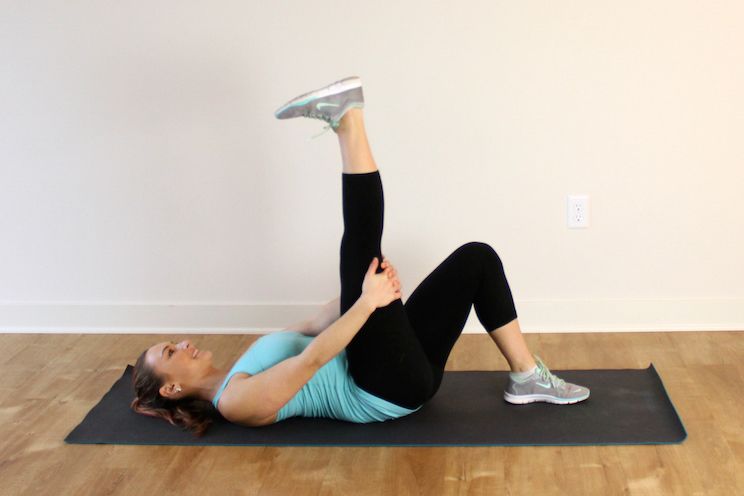
Lay on your back with both feet flat on the floor and your hips and lower back pressing into the floor. Extend your RIGHT leg up to the ceiling and grab behind your thigh, calf, or ankle depending on your flexibility. Extend the leg as straight as possible, without locking out the knee. To increase the stretch, flex through the foot. Hold for 60 seconds, and then repeat with the other leg.
Child’s Pose
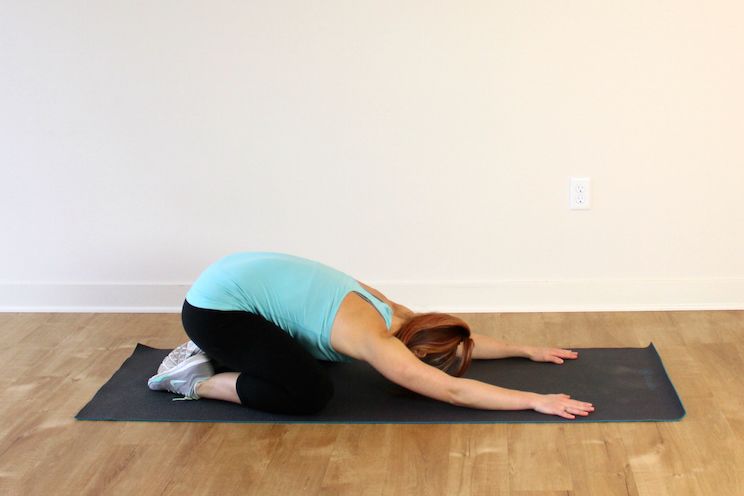
Start on all fours, with your hands under your shoulders and knees under your hips. Sit your hips back onto your heels, bringing your toes together, but keeping your knees apart. Keep the arms reaching forward to stretch through the shoulders. Stay here for 60 seconds to stretch the hips, lower back, and lat muscles.
Cobra Stretch
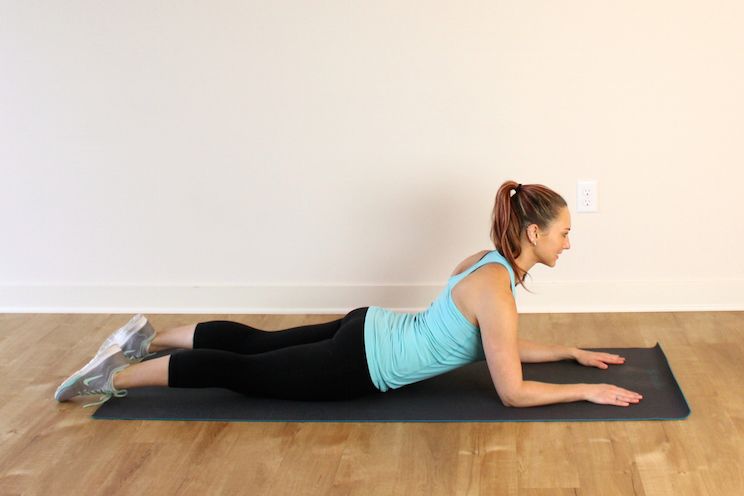
Lay on your stomach and place your elbows under your shoulders, with your forearms and palms flat on the floor. Engage your abdominals as your lift your chest and shoulders off the ground, focusing on extending through your upper back, not stressing your lower back. Make sure to draw your shoulders down your back, and relax your shoulders away from your ears. Hold for 30 seconds and release.

One More Tip for Working At a Desk Job
The best thing to do is get up from your desk and walk around every hour or so. Stand and walk as much as you possibly can throughout the day. Instead of sending that email to your coworker, walk down the hallway to talk to them. Take a walk on your lunch break or walk to the coffee machine (even if you don’t want any coffee), just to get up from your desk.
(Read This Next: 9 Exercises to Ease Your Lower Back Pain)


 Spaghetti Squash with Grass-Fed Beef and Mushrooms
Spaghetti Squash with Grass-Fed Beef and Mushrooms
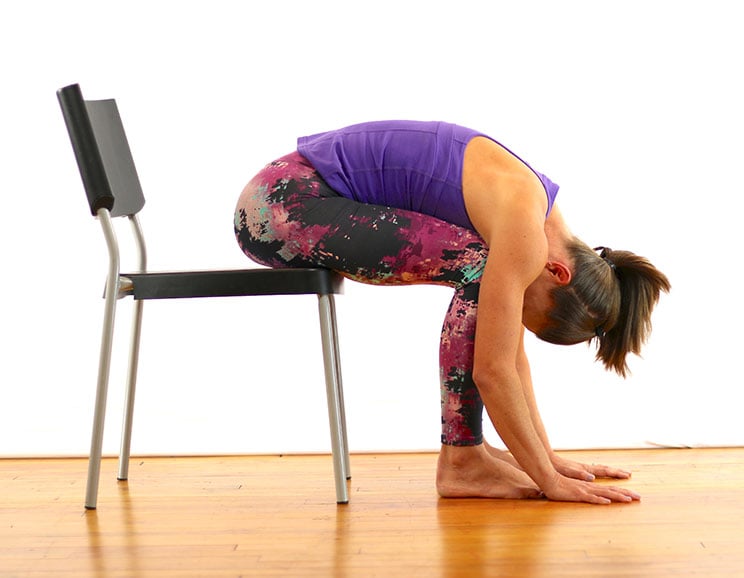
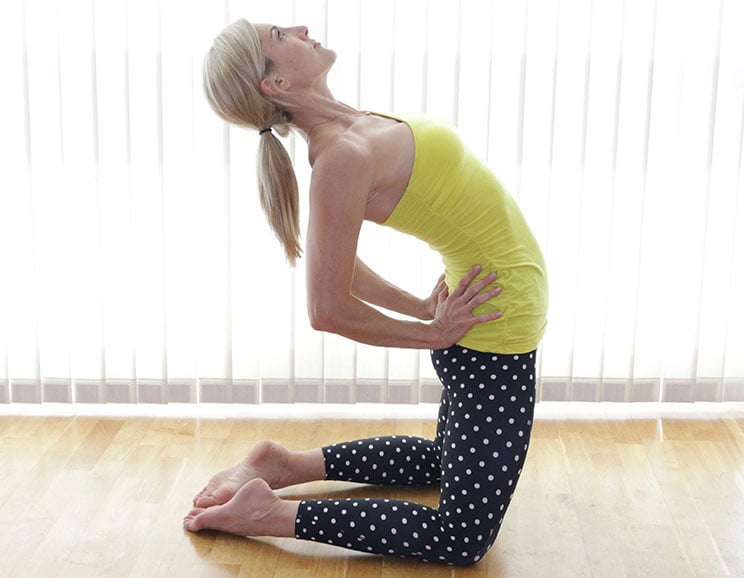
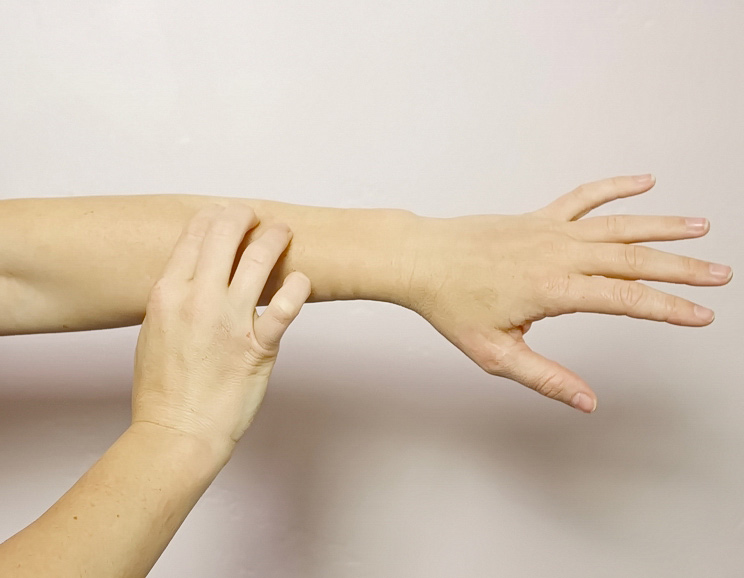

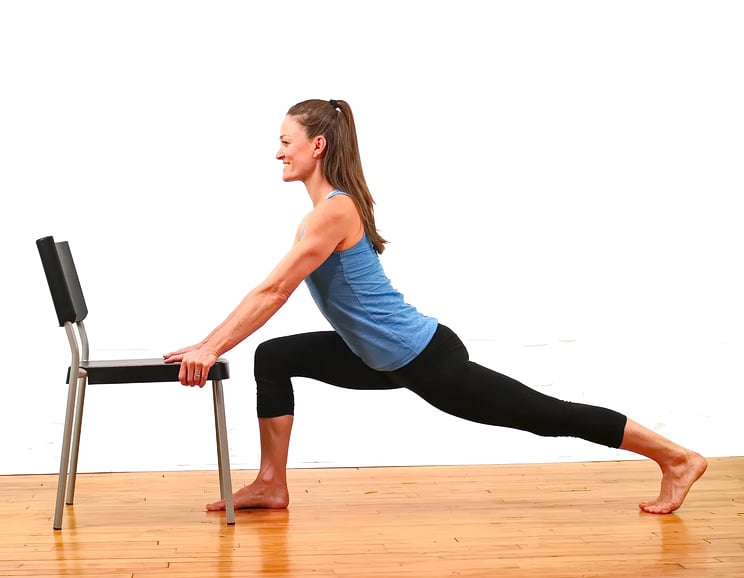
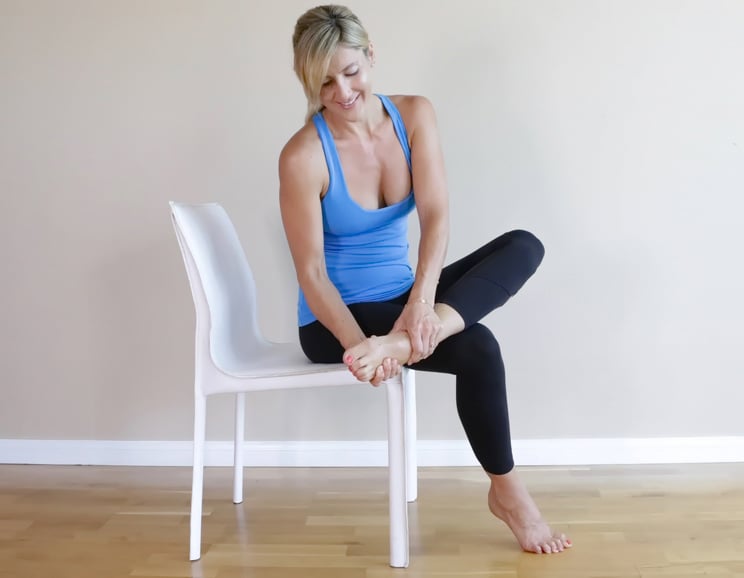
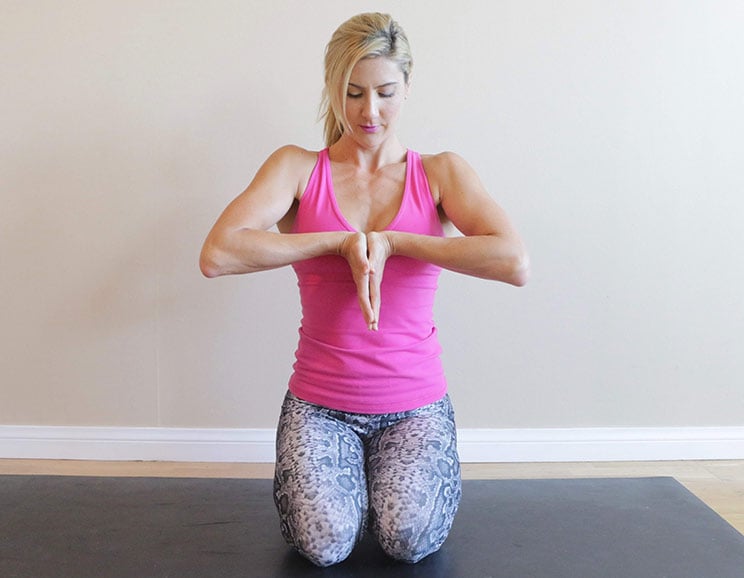
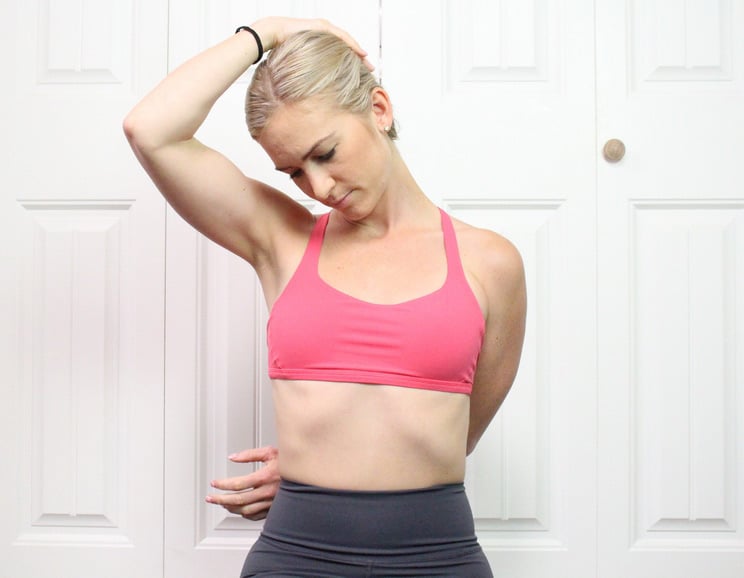
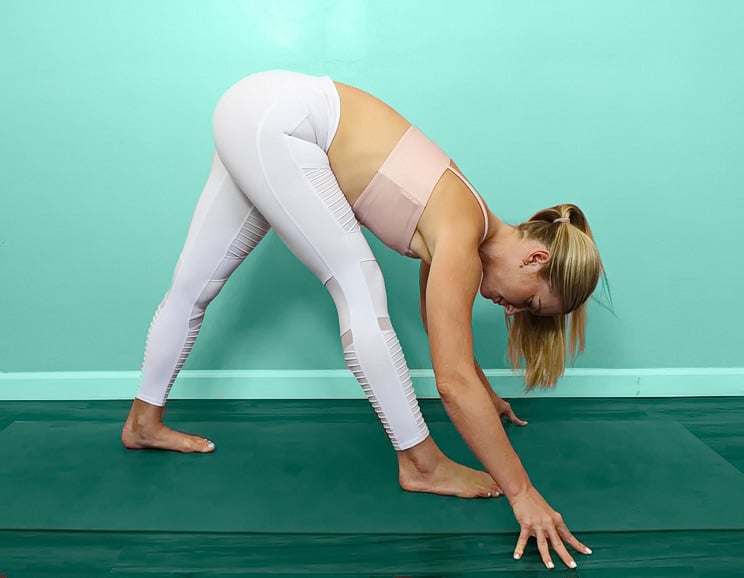
Show Comments